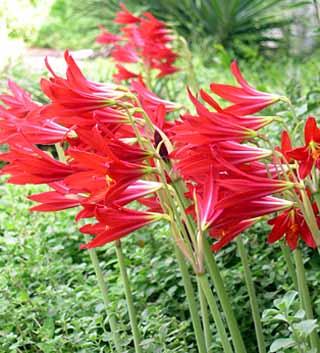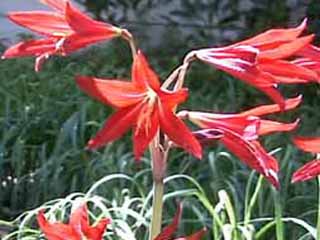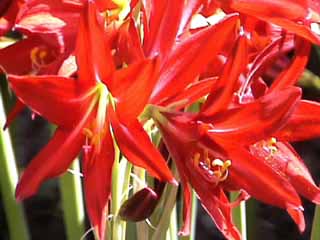Plant Profiles Index > Rhodophiala bifida
Introduced to Austin by P. H. Oberwetter, the oxblood lily, a South American native, is the toughest and most resilient plant in my garden save the weeds. After heavy rains in the fall, the deep red flowers sprout On stems about a foot tall. The flowers look like miniature amaryllis (which they are kin to). After flowering, they send up strappy bright green leaves which finally die down with in the heat of the following summer.
You can leave oxblood lilies undivided for years and they will come back annually with the Fall rains. But just because you can ignore them doesn't mean you should. Although common in older neighborhoods from Austin to Fredericksburg, they are almost impossible to buy. Several Austin nurseries do carry a few each summer. The bulbs are sterile triploids and must be propagated by division. If you are lucky enough to have some, divide them as often as you can.
Although you should divide them after their leaves have died down (so that they can store up as much energy as they can for the next growing season), I have divided them at all times of the year with no ill effect. In fact, this year, I didn't get them all replanted before the rains came in August. When they began sprouting, I heeled them in some mulch and by the time I got them in the ground they were blooming and had grown 1 inch of new roots. My mishandling didn't faze them.
Bulbs that are golf-ball sized or larger usually bloom in the fall of the same year you replant them. Bulbs smaller than must put on a year's growth before producing flowers. If you plant groups of like-sized bulbs together, you can divide them efficiently, one, two, or three years down the road.

Rhodophiala bifida 2003-09-06 Austin, TX

Rhodophiala bifida 2001-09-04 Austin, TX

Rhodophiala bifida 2001-09-04 Austin, TX